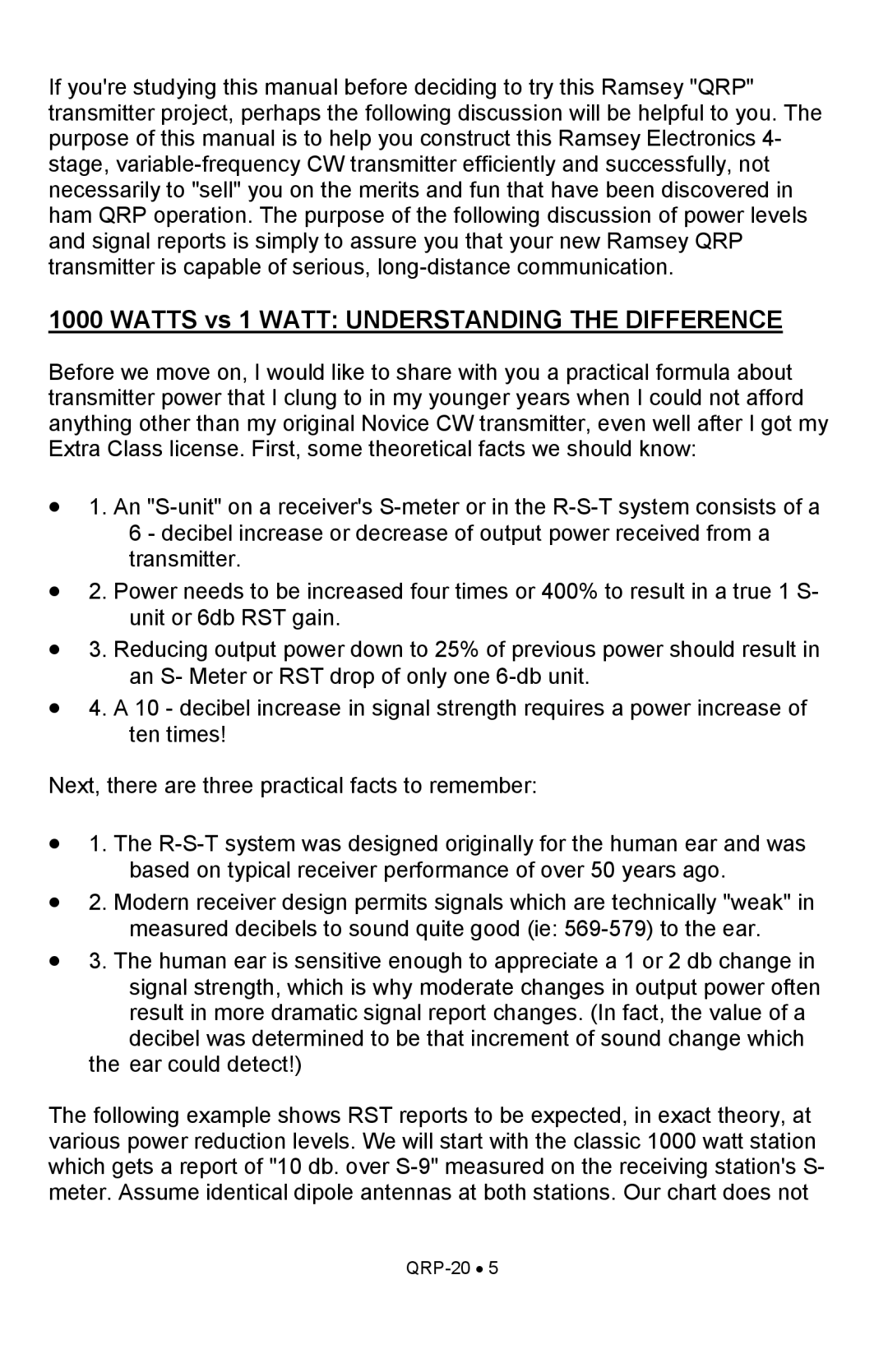QRP20 specifications
The Ramsey Electronics QRP20 is a compact and innovative low-power transceiver designed for amateur radio enthusiasts who appreciate both portability and efficiency in their operations. This QRP (low power) radio is primarily aimed at those who seek to operate on the HF bands, providing an exhilarating experience for operators who thrive on the challenges and satisfaction of making contacts with minimal power output.One of the standout features of the QRP20 is its compact design. This radio can easily fit into a backpack, making it ideal for field operation, portable use, or emergency communication scenarios. Weighing in at just a few pounds, it’s lightweight enough for extended outings without burdening the operator.
The QRP20 operates on a range of HF bands, specifically covering 20 meters, which is especially popular among amateur radio operators for its relatively consistent propagation and activity level. The transceiver leverages solid-state technology, ensuring reliability and optimizing performance. It can produce an output of up to 5 watts, which is standard for QRP operations, allowing operators to experiment with different antenna configurations and propagation techniques.
Another significant aspect of the QRP20 is its user-friendly interface. The radio features a straightforward layout with well-placed knobs and buttons for efficient tuning and operation. The built-in digital display provides clear visibility of frequency information and operational status, enhancing the overall user experience. In addition, the QRP20 includes a narrow bandwidth filter, which effectively reduces noise and enhances signal clarity, enabling clearer communication even in crowded band conditions.
The QRP20 is equipped with an internal speaker as well as a headphone jack for private listening. It also features a built-in keyer for CW (Continuous Wave) operation, making it versatile for various modes of amateur communication including voice and Morse code.
Powering the QRP20 is effortless, as it can be run off a standard 12V power supply or a rechargeable battery, giving operators flexibility in power sourcing. Whether during portable activations or in a home setup, the QRP20 is adaptable to different operating situations.
In conclusion, the Ramsey Electronics QRP20 is a remarkable choice for amateur radio users who value portability, versatility, and performance. Its efficient design, solid technology, and ease of use make it a compelling addition to any operator's gear, offering a satisfying QRP experience while staying connected with a global community of radio enthusiasts.
